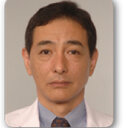Chronological changes of the contractile mechanism in prolonged vasospasm after subarachnoid hemorrhage: from protein kinase C to protein tyrosine kinase.
Nøgleord
Abstrakt
OBJECTIVE
Protein kinase C (PKC) plays a role in vasospasm after subarachnoid hemorrhage with a "two-hemorrhage" canine model until Day 7. However, clinical vasospasm continues during the course of 2 weeks. This study sought to clarify whether the contractile property of cerebral arteries might change in prolonged vasospasm.
METHODS
In this model, angiography was not performed until Day 14. The maximal contracting response induced by high K(+) was measured by using basilar arteries on Days 1, 7, and 14 in an isometric tension study. After stretching arteries equivalent to angiographic diameter, papaverine-sensitive (myogenic) and papaverine-insensitive (nonmyogenic) tones of the developed tension were also measured. On nonmyogenic tone, the effect of genistein, a specific inhibitor of protein tyrosine kinase (PTK), was examined. The PKC and PTK activities in basilar arteries were measured from Day 1 to Day 14.
RESULTS
Angiographic vasospasm on Day 14 was equivalent to that on Day 7. However, the maximum contractile response on Day 14 was significantly decreased compared with Day 7. Myogenic tone was significantly decreased, and the effect of genistein on nonmyogenic tone was significantly increased on Day 14 compared with Day 7. The activity of PKC on Day 14 declined to the Day 1 level, whereas that of PTK was enhanced from Day 7 and persisted until Day 14.
CONCLUSIONS
These results indicate that stiffness of the arterial wall increased and that the contractile property of the artery shifted from active myogenic tone to nonmyogenic tone, from PKC to PTK, with prolonged vasospasm.


